
History of pali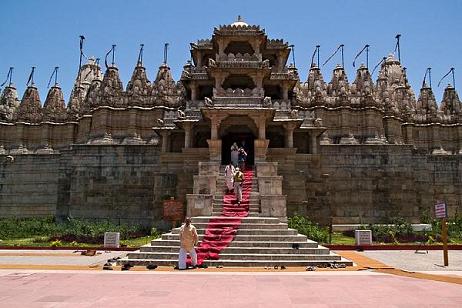 pali is a town in Rajasthan state of western India. Located in the Marwar region, pali is the administrative headquarters of pali District. It is situated on the bank of the river Bandi and is 72 km south east of Jodhpur. It is known as "The Industrial City" . pali was a trade centre. In the 11th century AD, pali was ruled by the Guhilas of Mewar. In the 12th century it became a part of the Nadol kingdom and was ruled by the Chauhan clan. In 1153 AD it was ruled by Chalukya Kumarpal and his feudatory Vahadadeva. Then it came under possession of Songara Chauhans of Jalore. The Rathor dynsasty chronicles relate that Siyaji or Sheoji, grandson of Jai Chandra, the last Gahadvala Rathore king of Kannauj, came to Marwar on a pilgrimage to Dwarka in Gujarat, and on halting at the town of pali he and his followers settled there to protect the Brahmin community from the raids of marauding bands. His devali with the inscription of 1273 AD was discovered 21 km north west of pali. Champavatas Rathores ruled pali until 1761 AD when it became part of Jodhpur state. Rao Chanda, tenth in succession from Siyaji, finally wrested control of Marwar from the Pratiharas. His son and successor, Rao Jodha, moved the capital to the city of Jodhpur, which he founded in 1459. pali remained a part of the Marwar kingdom until 1949, when the last ruling Maharaja acceded to newly-independent India. The oldest temple in pali is the temple of Somanatha. Maharana Pratap was born in pali. His birth place is known as Juni Kacheri. Geologists trace the existence of pali to pre-historic age and maintain that it has emerged from the vast western sea spread over a large part of the present day Rajasthan. In the Vedic age Maharsi Javali stayed in this area for meditation and interpretation of Vedas. The Pandavas in the Mahabharata age also have made this area (near Bali) their resting place during the exile. As a part of ancient Arbuda Province, this area was known as Balla-Desh. Historical relics depict the existence of this area during the Kushana Age, when King Kannishka had conquered Rohat and Jaitaran area, parts of today's pali district, in 120 AD. Till the end of seventh century A. D., this area was reigned by the Chalukya King Harshavardhana who also conquered Bhinmal and most of the present area of Rajasthan. After the Arab invasions of India this area was concentrated by Rajput rulers from all over India. During the period from 10th to 15th century, boundaries of pali extended to adjoining Mewar, Godwad and Marwar. All Rajput rulers resisted the foreign invaders but individually fought for each other's land and leadership. After the defeat of Prithvi Raj Chouhan, the great warrior against Mohd. Gauri, the Rajput power of the area was disintegrated and Mewar and Godwad area of pali become the the subjects of then ruler of Mewar, Maharana Kumbha. But pali city which was ruled by Brahmin rulers with the patronage of neighbouring Rajput rulers, remained peaceful and progressive. 16th and 17th century saw a number of battles in the surrounding areas of pali. Shershah suri was defeated by Rajput rulers in the battle of Gini, Mughal emperor Akbar's army had constant battles with Maharana Pratap in Godwad area. Again after the Mughals had conquered almost all of Rajputana, Veer Durga Das Rathore of Marwar made organized efforts to redeem the Marwar area from Aurangzeb, the last Mughal emperor. By then pali had become subservient to Rathores of Marwar state. pali was rehabilitated by Maharaja Vijay Singh and soon it became an important commercial center. Role in struggle for freedom Under British rule pali played an important role by pioneering the freedom struggle in Marwar. Various Thakurs of pali under the stewardship of Thakur of Auwa, who was the most powerful of all, confronted with the British rule. Auwa fort was surrounded by the British army and then confilcts lasted by 5 days, when at last the fort was possessed by the British army. But this heroie action of Auwa paved the way for continued and organised struggle for freedom. 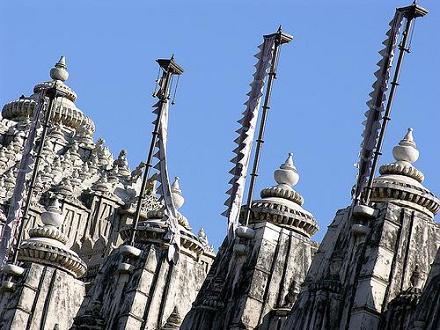 The history of pali can be traced back to the 10th century, when the Chauhana ruler Raval Lakha founded his dynasty at Nadol (now called Desuri, which is at the heart of pali district). The Chauhanas had founded their dynasty in Mewar in the 8th century and gradually extended their sway to other parts of Rajputana. Raval died in about 982AD, and the next five decades were a period of turmoil in which pali hosted a succession of rulers. pali became battleground for supremacy between the Chauhanas of Rajputana, the Paramaras of Malwa and the Chalukyas of Gujarat. Finally pali was captured by a prince called Anahilla, who became one of the great rulers of pali in the early medieval period. His chief claim to fame was that he managed to stop even the great Mahmud of Ghazni in his tracks, who reached pali after sacking Somnath in Gujarat. After a brief encounter with Anahilla, which can be said to have ended in a draw, Mahmud was forced to alter course to get back to Ghazni. However, after the death of Anahilla, pali was forced to submit to Bhimadeva I of Gujarat. However, the people of the region being a proud race never really reconciled themselves to outside rule, and it was Ratnapala who finally reclaimed pali from Gujarat between 1116 and 1119AD. However, the reprieve was temporary, and for the next 80 years the Chalukyas of Gujarat continued to wield considerable influence in the region. The most important pali ruler during this period was Kelhana, who reigned from 1164 to 1193, and although he was felicitated with many titles he too continued to recognise Chalukyan supremacy. After the Chauhanas were defeated by the Turk Muhammad Ghori at the second battle of Tarain, they requested the Chalukyas to help them throw out the Turks out of Rajasthan. The Chalukyan king Jayatsimha teamed up with Dharavarsha Paramara of Abu and his brother Prahaladana, and faced Qutub-ud-din Aibak in a pass near Abu. However, the Muslims won a comprehensive victory and most of the Hindu leaders were slain or taken prisoner. 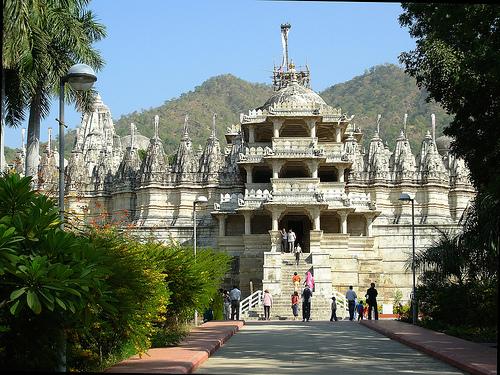 However, the Muslims found pali too remote an area to be worth bothering about and the region reverted back to Chalukyan control. It was however a Chauhana, Dhamdhaladeva, who administered the territory from 1209 to 1226 on behalf of the Chalukyan Bhima II. It was during this period that the Rathore clan was emerging as a powerful force in western Rajasthan, and they soon replaced the Chauhans as the pre-eminent power in the region. Siha, the founder of Rathore family of Marwar at the time gathered support from the rich paliwal Brahmins of pali by acting against the Balecha Chauhanas. The Chauhanas were feudatories of the Jalore rulers who were the local jagidars (land owning nobles) and extremely unpopular due to their inability to protect their subjects against the repeated attacks of the Mina tribe and because of the atrocities they themselves committed. It is presumed that the paliwal Brahmins paid some kind of a tribute in exchange of the protection offered by Siha. In 1273AD Siha died and was succeeded by his son Asthan who is credited with victory over the Guhil chief of Khed. Unfortunately, not much except for this is known about his reign or the history if the Rathores during the 14th century due to the absence of authentic records. It can only be circumstantiated that the Rathores, surrounded by the Muslims on the south, east and north, and the Bhattis to the west struggled to keep their territory without any scope of expansion. It was only after the Delhi Sultanate had weakened that Mallaninath, a powerful Rathore, was able to conquer the adjacent tracts on both sides of the river Luni. This area was latter renamed after him as Mallani. Later in the line of succession was Maldeo who ruled between 1532-1562 AD, and during his reign the Rathore power reached its zenith. He not only extended the limits of his kingdom but also achieved a formidable position among the monarchs of Rajputana. He is credited with building many forts in his kingdom, including the one in pali. But with the coming of the Mughals Maldeo's expansionist plans in the area suffered a setback. In the reign of Chandrasen who ruled from Jodhpur between 1562-1581AD the Mughal forces were able to annex Jodhpur. The throne nevertheless was bestowed upon Chandrasen's brother Udai Singh who was able to recover almost all the former possessions if his kingdom by working in close unison with the Mughal forces and establishing matrimonial alliances with the Mughal emperor. Udai Singh's reign was followed by that of Sur Singh (1595-1619) in whose reign not much activity happened in or around pali. It was only in 1680AD that the then Mughal Emperor Aurangzeb sent his son Prince Akbar (not to be confused with Emperor Akbar) to subdue Mewar and Marwa. Ajit Singh was bestowed Merta (northern region of pali) by Aurangzeb. 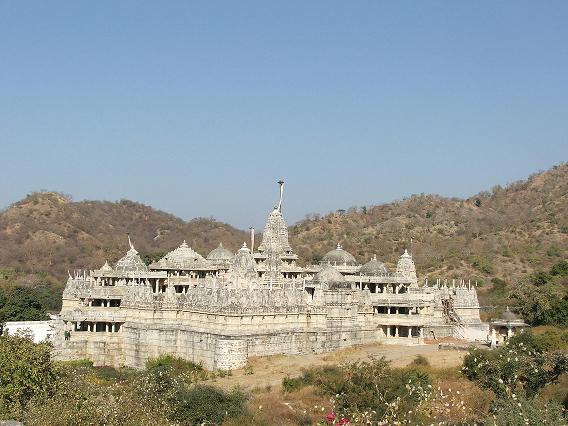 After Aurangzeb's death in 1707AD the Mughal empire began to decline. Ajit Singh grabbed this moment to capture Jodhpur from its Muslim Governor. But his happy days in Jodhpur were short lived and Shah Alam, Aurangzeb's son and the Mughal emperor, was able to treacherously recapture Jodhpur. Shah Alam sent a friendly invitation to Ajit Singh and as soon as Ajit Singh left Jodhpur forces sent by Shah Alam took over the capital. By 1708 Ajit Singh realised that the Mughals had stayed on in the region far too long. To further this bright idea he allied himself with Rana Amarsingh II of Mewar and Maharaja Sawai Jaisingh of Amber. With three valiant Ranas on a singular mission, there was very little that could possibly go wrong. The Mughal vassal in Jodhpur was expelled. Inspired by this victory the trio proceeded to annex Merta, Ajmer and Sambar. All was well until Ajit Singh got into an argument with the Sayyid brothers in Delhi who decided that the Rajput had gone too far. An army was dispatched to put things in order and Ajit Singh subsequently lost the territories he had seized. However, in the year 1720 the Sayyid brothers were assassinated and Ajit Singh recovered Ajmer. At this point Ajit Singh's moral was high and he felt settled enough to introduce reforms in his area and strike coins in his name. But Ajit Singh was just not destined to rule in peace. In 1723 he lost Ajmer to Muhammad Shah, the Mughal emperor. If that was not bad enough the same year he was killed by a conspiracy hatched by his two sons, Bakhat Singh and Abhay Singh. Muhammad Shah then crowned Abhay Singh emperor of Marwar. The reign of Abhay Singh that lasted till his death in 1750 and that of his successors was plagued with the continuous onslaught by the Marathas. A regular tribute was paid to the Marathas in order to keep peace and this depletion of the royal treasury led Abhay Singh's cousin Bijay Singh (1753-93) who was ruling under immense pressure to raise a mercenary army. It was with the help of this army that Bijay Singh was able to acquire the rich province of Godwar from Rana of Mewar. This might have improved the status of the treasury but was could not keep the Marathas at bay, who returned in 1790 in full force after a short respite. 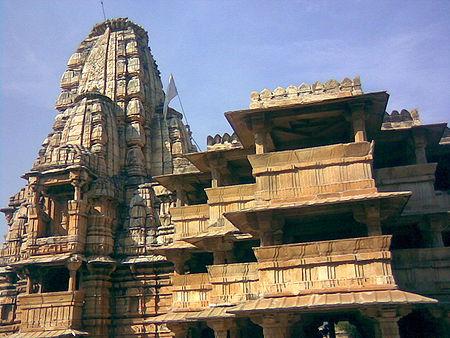 Tension in the area reached its peak during the reign of Man Singh (1803-43) when a bloody war was fought between Jodhpur and Jaipur over the hand of the Mewar Princess, Krishna Kumari. The tense situation was worsened when Amir Khan, a plunderer, entered the picture as an arbiter between Mewar, Marwar and Jaipur. Amir Khan loyalties were with the highest bidder and he is known in history for his unethical dealing. His manipulation of the situation continued beyond the death of Krishna Kumari who ended her life by consuming poison. Man Singh, under pressure of the internal animosity, retired from the throne to lead a life of a ascetic and the throne was passed on to his son Chhatar Singh. By the 19th century, the British presence was being felt in the region. In 1818 Chhatar Singh concluded a treaty with the British under which a tribute was to be paid to the latter in return of protection provided to the state. Under this treaty the British sent a army to Jodhpur in 1839 because they were uncomfortable with the frequency of rebellions in the state. This force stayed in Jodhpur for five months till Man Singh was able to assure the British that the situation would stay under control. In 1843, Man Singh died without leaving an heir. This led to considerable confusion, and after a lot of debate the chief of Ahmadnagar (in Gujarat) Takhat Singh was chosen by the nobles after having received the consent of the British. Takhat Singh ruled from 1843 till 1873 and was constantly harassed by a number of revolts including the 1857 Uprising against the British which came at a time when the political unrest was at its peak. Takhat Singh being an outsider faced much resistance from the nobles who were anyway dissatisfied with the British interference in the traditional working of politics in the area. The 1857 mutiny broke out in neighbouring Abu and Erinpura, wherein the mutineers captured all weapons from the European soldiers. They plundered a lot of property en route to pali, where they finally made for Dhola village in pali district. The mutineers who had collected from pali and adjoining areas numbered in excess of 5,000 men and were met by troops from Jodhpur (which remained loyal to the British) on 8th of September 1857. The insurgents won a decisive victory leading the British to dispatch British troops under Captain Mason, the Political Agent of Jodhpur. The resultant battle was bloody, and as many as 2,000 men died on both sides. The British, although equipped with nine pieces of artillery, were defeated by a heroic charge made by the insurgents and Mason himself died in the engagement. In order to quell the revolt the British responded by reportedly sending 30,000 troops who invaded Awa (in pali district) on 20th of January 1858. The Awa chief, undaunted by the strength of the opposing army, handed over the defence of the Awa fort to his younger sibling Prithvi Singh. Prithvi Singh fitted the fort with 50 pieces of artillery but could deploy no more than 5,000 men in the field. They resisted the imperialists for six whole days but superior numbers won the day in the end and the fort was vacated. Not content with victory the British destroyed the fort and the palace and even temples and idols were not spared. The statue of goddess Mahakali, for instance, was brought to Ajmer and is still kept in the Ajmer museum. Thus pali finally came under the jurisdiction of the British and Takhat Singh was rewarded in 1862 for his part in crushing the rebellion. From then on the areas covered by the present pali district became part of Jodhpur state, until Indian Independence when Jodhpur became part of state of Rajasthan and the district of pali was carved out. |

